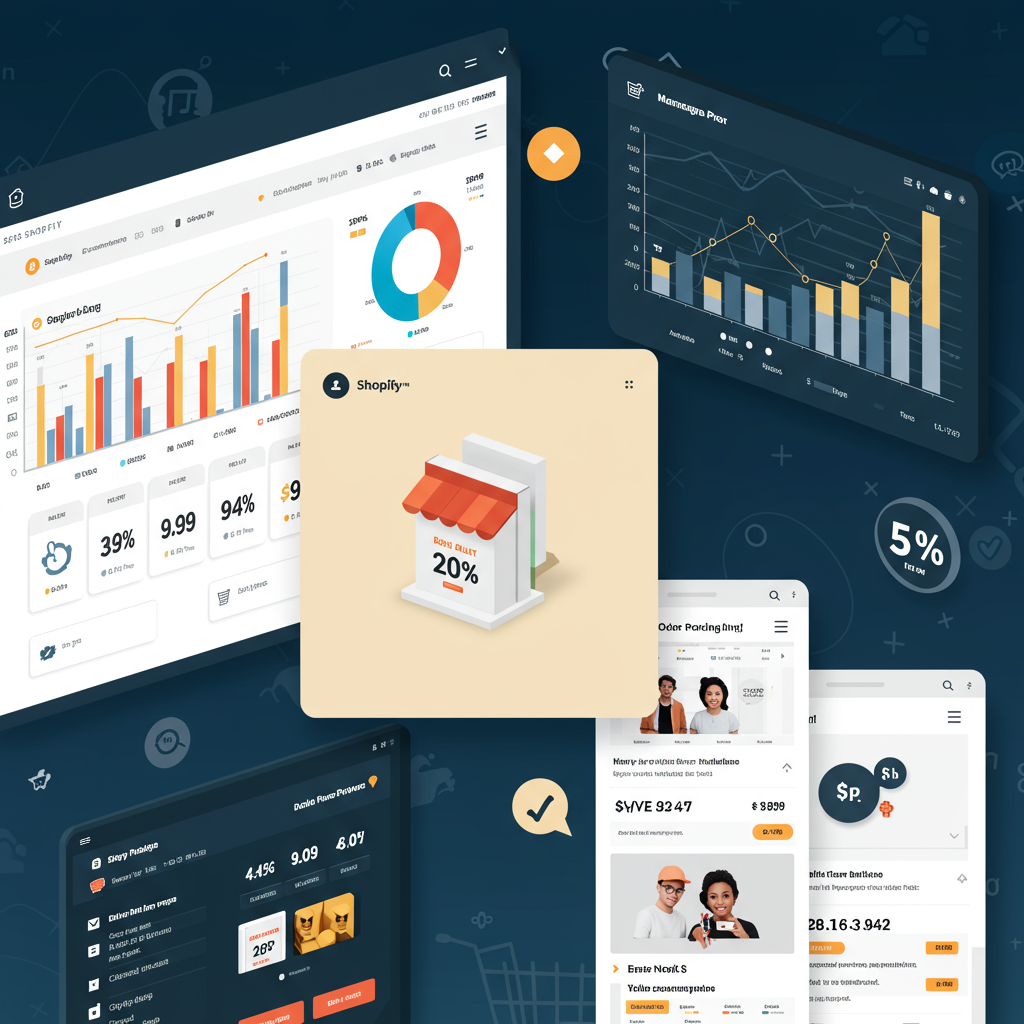Unlocking Profitability and Scaling Your E-commerce Business Through Strategic Pricing Decisions.
As a Shopify merchant, I’ve learned that pricing isn’t just about slapping a number on your products. It’s a powerful strategic lever that directly impacts your profitability, market positioning, and ultimately, your growth trajectory.
Many entrepreneurs, myself included, initially underestimate the complexity and importance of a well-thought-out pricing strategy. We often default to what competitors are doing or simply add a standard markup.
However, I’ve come to realize that a truly effective pricing strategy is dynamic, data-driven, and deeply intertwined with your overall business goals. It’s about finding that sweet spot where customers feel they’re getting value, and you’re achieving healthy margins.
The first fundamental step I always recommend is to thoroughly understand your costs. This isn’t just the cost of goods sold (COGS), but every single expense associated with bringing your product to market and running your business.
I’m talking about shipping costs, payment processing fees, marketing expenses, Shopify subscription fees, app costs, employee salaries, and even the cost of your time. Ignoring any of these can lead to underpricing and eroding your profits.
Once you have a clear picture of your fixed and variable costs, you can establish a baseline for your pricing. This minimum price ensures you’re not losing money on each sale, which is crucial for long-term sustainability.
Beyond costs, I believe it’s equally vital to understand the perceived value of your product in the eyes of your target customer. What problem does it solve? How does it improve their lives? What unique benefits does it offer?
Your brand story, product quality, customer service, and even your website’s design all contribute to this perceived value. A premium brand can often command a premium price, even if its COGS are similar to a competitor’s.
Let’s dive into some common pricing strategies I’ve explored and implemented on Shopify. The simplest is often **Cost-Plus Pricing**, where you add a fixed percentage markup to your total costs.
While straightforward, I find this method can sometimes leave money on the table if your product’s perceived value is much higher than its cost, or it can make you uncompetitive if your costs are high.
A more sophisticated approach I favor is **Value-Based Pricing**. Here, you set prices primarily based on the perceived value to the customer, rather than solely on your costs. This requires deep customer understanding and market research.
For instance, if your product saves customers significant time or money, or offers a unique emotional benefit, you can justify a higher price point. I’ve seen this work wonders for niche products on Shopify.
**Competitive Pricing** involves setting your prices based on what your competitors are charging. While it’s essential to be aware of your competition, I caution against simply matching their prices without considering your own unique value proposition.
Sometimes, being slightly higher or lower than competitors can be a strategic move, depending on whether you’re positioning yourself as a premium or budget-friendly option.
**Dynamic Pricing** is another fascinating strategy, especially for Shopify stores with fluctuating demand or inventory. This involves adjusting prices in real-time based on factors like demand, time of day, inventory levels, or even customer behavior.
While more complex to implement, often requiring specialized Shopify apps, I’ve seen it effectively maximize revenue during peak seasons or clear out excess inventory during slow periods.
**Tiered Pricing** or **Freemium Models** are excellent for offering different levels of your product or service, catering to various customer segments. Think of basic, standard, and premium versions of a digital product or subscription.
On Shopify, this can be implemented through product variants, bundles, or dedicated subscription apps, allowing customers to choose the option that best fits their needs and budget.
Implementing these strategies on Shopify is surprisingly flexible. The platform itself allows for setting individual product prices, sale prices, and even comparing at prices to show discounts.
For more advanced strategies, I’ve found the Shopify App Store to be an invaluable resource. There are apps for dynamic pricing, subscription management, bundling, and even A/B testing different price points.
Speaking of A/B testing, I cannot stress enough the importance of experimentation. Don’t just set a price and forget it. I constantly test different price points, discount strategies, and bundling options to see what resonates best with my audience.
Shopify’s built-in analytics, combined with external tools, provide crucial data on conversion rates, average order value, and customer lifetime value, all of which inform my pricing adjustments.
I also pay close attention to **Psychological Pricing**. Using prices that end in .99 (charm pricing) can make a product seem significantly cheaper, while rounding up to whole numbers can convey a sense of luxury or prestige.
Bundling related products together at a slightly reduced combined price is another strategy I’ve used to increase average order value. Customers perceive greater value, and you move more inventory.
Similarly, implementing effective upselling and cross-selling techniques at checkout or on product pages can significantly boost revenue without acquiring new customers. Shopify apps make this relatively easy.
For certain products, especially consumables or services, I’ve found **Subscription Models** to be a game-changer. They provide predictable recurring revenue and foster stronger customer loyalty.
Finally, remember that pricing is not a static decision. The market evolves, your costs change, and customer perceptions shift. I make it a point to regularly review and adapt my pricing strategy.
This involves monitoring competitor pricing, analyzing sales data, and most importantly, listening to customer feedback. Sometimes, a slight price adjustment can have a profound impact on your bottom line.
What are your thoughts on these strategies, and which ones have you found most effective in your own Shopify journey?
In conclusion, mastering your Shopify pricing strategy is an ongoing journey of analysis, experimentation, and adaptation. It’s about understanding your costs, valuing your product, and strategically positioning yourself in the market for sustainable growth.






